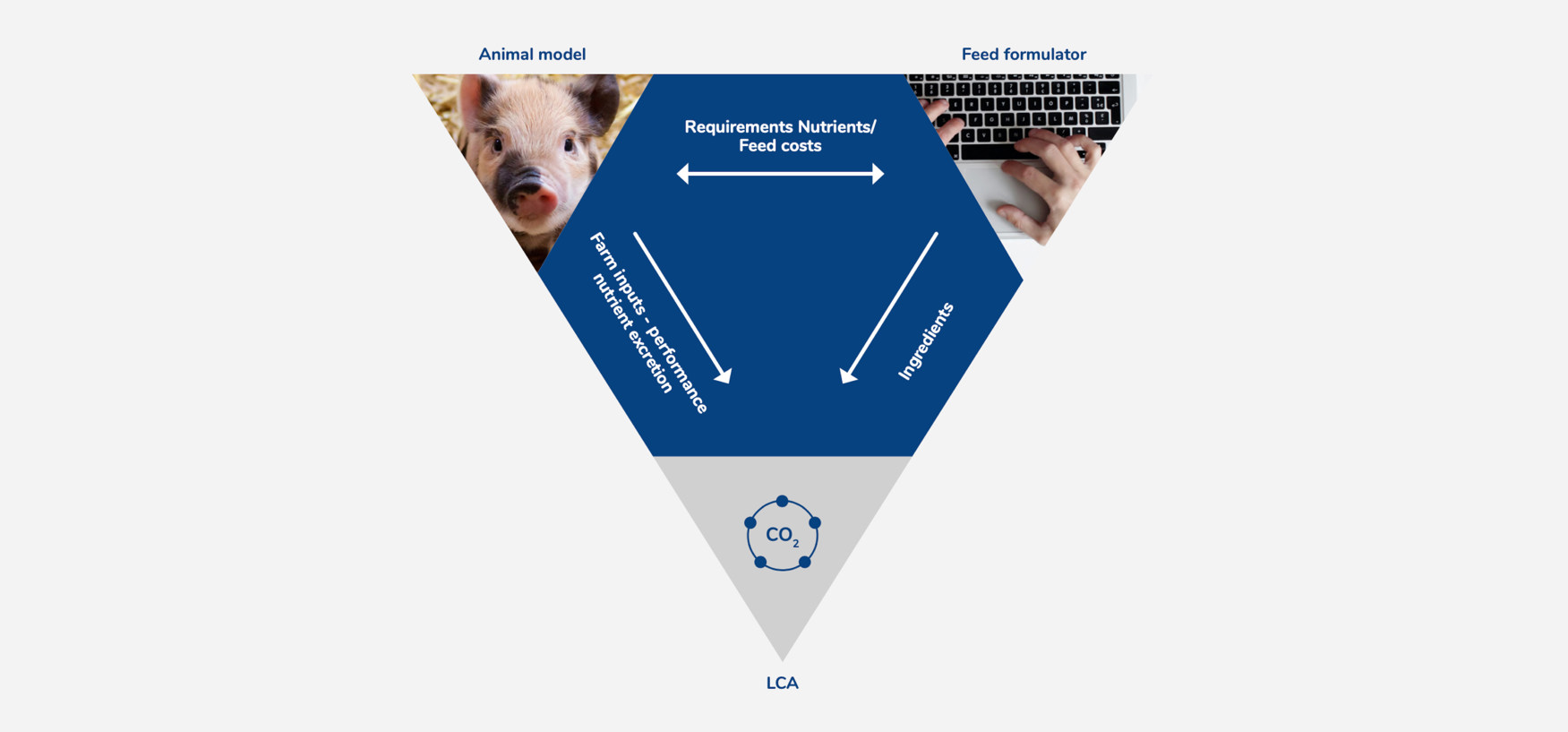7.1 Watson swine production simulation tool
The Watson model is a unique intelligent service we designed to help producers take informed decisions and identify key levers to improve their production in a profitable and sustainable manner.
Trouw Nutrition has been offering the Watson® swine production simulation since 2006. It’s arguably the most sophisticated tool of its kind. We also offer different feed formulation tools for all main categories of species. Adding to the original ability to optimise the performance, nutrition and economic profile of nutritional solutions, in 2021, Trouw Nutrition introduced LCA data and emission modelling to its proprietary predictive service and formulation tools.
Watson now calculates how changes to diets, feeding schedules and farm management influence environmental impacts such as climate change, eutrophication, acidification, land use, renewable resources and water scarcity. These indicators are in line with the Product Environmental Footprint guidelines of the European Commission, primarily using Global Feed LCA Institute (GFLI) data. In early 2022, all Trouw Nutrition-licensed feed formulation software will also be able to solve for lowest- footprint feed solutions, with dairy and poultry models also being released subsequently.
The Watson integrated service tool provides the intelligence required to evaluate inputs and predict outcomes across varying animal production phases and at critical points along the supply chain. A series of systems integrates animal biology, feed formulation, and environmental conditions into a life cycle analysis model for driving decisions that support animal performance, farm economics and environmental stewardship (Figure 1).
Figure 1: The Watson model brings life cycle analysis to the business of sustainable livestock production as it integrates animal biology, feed formulation, and a range of environmental metrics into a predictive model for driving decisions on the farm.

Progressing towards RoadMap 2025 goals
The expanded capacity of Watson will help our customers not only conduct feeding protocols more efficiently and more profitably, while finding alternatives to antibiotics, but also adopt nutritional solutions that carry a lower footprint in production, while not overlooking trade-offs such as a potential decrease in digestibility which might increase manure emissions.
Bringing this intelligence to customers is one of our company goals for 2025. In addition, our commitment to reduce our carbon footprint through SBTi is mostly impacted by the footprint of our feed ingredients. By working together to reduce the footprint of feeds, farmers and Nutreco will be able to achieve significant reductions in their footprints. We expect the sustainability impact evaluation tool to trigger the positioning and encourage the development of novel ingredients that show a low environmental impact.
Watson can also predict the levels of environmental pollutants, such as nitrogen and phosphorus, that will be retained in the animal vs. excreted into the environment. This helps customers to take decisions that will steer the reduction of these pollutants.